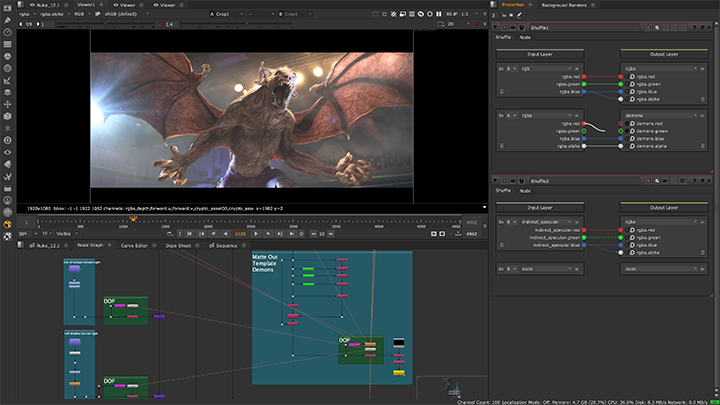
Sean Brice, Nuke product manager at Foundry said, “Our priority, as always with the release of major updates to Nuke, is to answer our customers’ needs.
Foundry nuke 10 manual#
With it, artists can generate high-quality motion vectors from image sequences and use them to automatically push or warp paint or textures across a range of frames, replacing a tedious and time-consuming manual process. NukeX and Nuke Studio also save time for common clean-up, replacement and augmentation tasks through a new Smart Vector toolset, which draws on technology from Foundry’s research team. To help eliminate bottlenecks from common tasks, Nuke 10 improves performance across several areas: Roto Paint, Vector Blur, timeline manipulation and transcoding are all now significantly faster, while NVIDIA multi-GPU support speeds up processing time for GPU-accelerated nodes on appropriate hardware. With Nuke 10, we’re putting an emphasis on performance, stability and productivity to attain that goal” stated Andy Whitmore, chief product officer. Retrieved March 19, 2011.“One of Foundry’s aims is to make tools that help artists be more efficient, so they can focus their energy on using their creativity to achieve the highest quality results. ^ "The Foundry releases NUKE Non-commercial".Archived from the original on 10 July 2011. ^ "3D stereo workflow, new UI & Python scripting are the highlights".^ "D2 Software's Nuke Acquired by The Foundry".Archived from the original on June 7, 2007. ^ "D2 ships Nuke v4.5 Compositor with image-based Keyer and new Interface".
Foundry nuke 10 software#
^ "Digital Domain launches software unit".^ "2001 Scientific and Technical Awards".^ "Industrial Light & Magic (ILM) Purchases Nuke Site Licence".^ "Double Negative Procures Nuke Site License".
Foundry nuke 10 license#

In 2005, Nuke 4.5 introduced a new 3D subsystem developed by Jonathan Egstad. In 2002, Nuke was publicly released by D2 Software. Nuke won an Academy Award for Technical Achievement in 2001.

FLTK was subsequently released under the GNU LGPL in 1998.

Nuke version 2 introduced a GUI in 1994, built with FLTK – an in-house GUI toolkit developed at Digital Domain. In addition to standard compositing, Nuke was used to render higher-resolution versions of composites from Autodesk Flame. Nuke (the name deriving from 'New compositor') was originally developed by software engineer Phil Beffrey and later Bill Spitzak for in-house use at Digital Domain beginning in 1993.


 0 kommentar(er)
0 kommentar(er)
